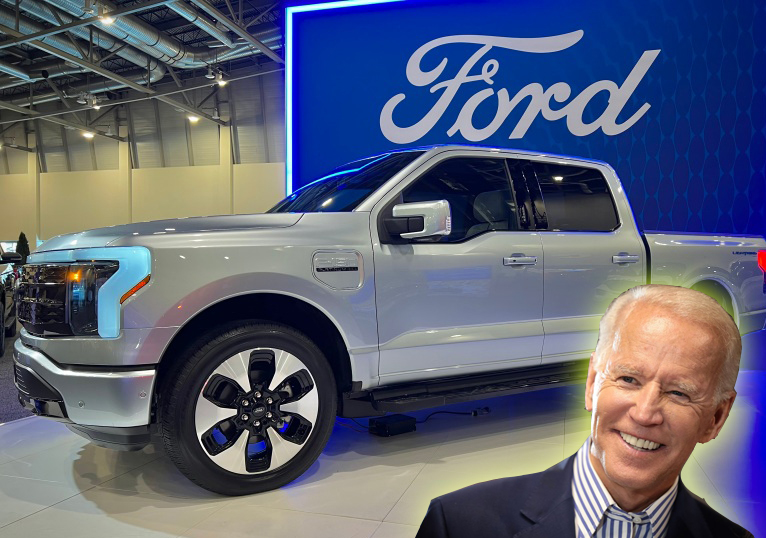The Biden Administration's new EV tax credit will have a deadly impact on America's road death totals because nearly all of the vehicles qualifying for a subsidy is a heavy SUV or pickup, advocates warn.
On Monday, the Treasury announced the 14 electric and plug-in-hybrid vehicle models for which consumers will be able to claim up to $7,500 in tax breaks under new standards established in the Inflation Reduction and Jobs Act. And the list is dominated by heavy megacars that will require significantly more battery power than smaller models — and excludes smaller models that, until the new rules, did qualify for the credit.
With the exception of the subcompact hatchback and subcompact SUV version of the Chevy Bolt, and the Tesla Model 3, sedan, all the cars on the list are either SUVs, pick-ups or vans, with most classified as full-size or luxury models.
Put another way: of the 14 cars on the market that the government will pay Americans to buy, 11 are megacars.
Some experts argue the problems with paying Americans to buy heavy EVs are manifold — and that they arguably outweigh the benefits of losing tailpipe emissions.
For one, even without the near-silent motor and lightning-fast acceleration of electric vehicles, SUVs of all powertrain types are already a leading factor in America's skyrocketing pedestrian and cyclist death totals, which researchers believe is attributable to those vehicles' high front ends and massive blind spots. Adding an EV battery into the mix, meanwhile, increases the weight of a comparable gas-powered car by about one-third, which safety experts warn acts as a force multiplier when green cars collide, making crashes less survivable for the occupants of lighter models.
Big electric cars also gobble up more of the scarce battery components that could be used to power more efficient vehicles, like e-sedans or e-bikes, even when they're hauling little more than a single person on a short commute — and they do so often at stunning costs to fragile ecosystems and to the people who work in mines, no matter where those mines are located. And while it's hotly debated, there's also some evidence that the heaviest cars on the road may generate heavier loads of tire and brake pad particulate pollution, which can contribute to asthma, heart disease and other serious conditions.
There's also research that indicates that when electric cars are purchased as secondary vehicles to complement a gas powered car — which they often are, not least because charging on long drives remains a challenge — they don't actually get driven enough to offset the emissions they incur during their initial production. That's particularly true among wealthy vehicle owners who are among the only ones who have the resources necessary to take advantage of federal tax credits on super-expensive EVs in the first place; Politico's Tanya Snyder notes that of the newly eligible models, "just two EVs now on the market will be available for less than $25,000 after the tax credit is deducted — the Bolt, whose cost could fall to $19,000 thanks to the tax break, and a utility vehicle version of the Bolt, which could drop to $20,300. That’s assuming buyers can actually find the vehicles at that price in today’s post-pandemic seller’s market."
More than half of the EVs on the list, meanwhile, cost more than the already-staggering $48,000 average that new cars run across all fuel sources. The most expensive car on the list, the Aviator Grand Touring, costs an even-more-jaw-dropping $70,190 — and as Snyder points out, it's "unclear" how the Biden administration will achieve its recently proposed goal of "EVs accounting for two-thirds of new car and light truck sales by 2032 ... with so few [affordable] EVs qualifying for the incentives."
So, to recap: unless Chevy can start making a lot of Bolts really quickly, or automakers take the unlikely step of abandoning their super-profitable love affair with the SUV, the government is poised to pay Americans to buy big electric cars that 1) are known to be more dangerous to pedestrians, cyclists, and even the drivers of smaller vehicles, 2) require a maximum amount of exploitative and destructive mineral extraction, and 3) the emissions goals of broader vehicle electrification — and the discount will likely disproportionately benefit the wealthiest Americans alone, who are also the most likely to leave their new green whips in the garage while they continue running on fossil fuel.
The federal EBIKE Act, meanwhile, does none of those things, but has not yet been passed.






